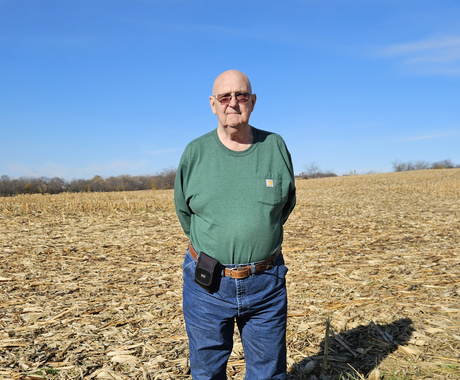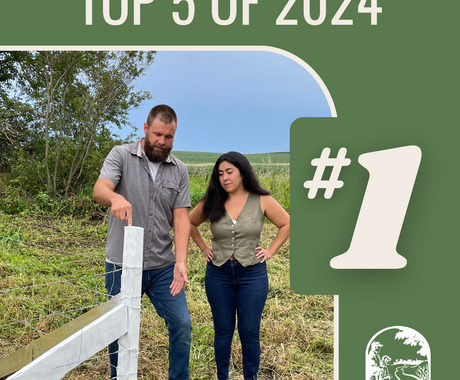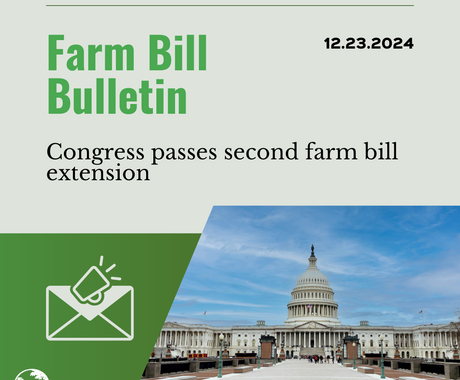This is the second of two case studies we completed on our Women's Learning Circles. Check out the one page case study here.
Crystal Powers’ motivation for farming is to help people restore the land through sustainable agriculture.
“The combination of doing something for my local community from a food standpoint and also utilizing farm ecosystem services, like bringing clean water, clean air, and beauty to the community, is the whole package for me,” she said.
An environmental engineer by trade, Crystal gained an interest in agriculture during college. Initially, she wanted to establish a dairy, however, through schooling, found potential to impact the land at the same time.
Today, she owns and operates a dairy, Darby Springs Farm, with her husband, William. The Ceresco, Nebraska, farm has an on-site creamery and pastured poultry. Perennial fruits and nuts are grown to add diversity. Though this may sound like a standard dairy, the business owner prides herself on using sustainable farming practices to run her operation.
There are five Guernsey cows on the farm, and the owners hope to get more. The cattle are 100 percent grass-fed, and are rotated through pastures to give the grass time to recover after each grazing period. Milking starts in late spring, and lasts through the end of the year, which gives the cows, and farmers, time to recover during the cold months when the grass is dormant. Calves nurse from their mamas, and stay with them in the pastures to learn how to graze.
The farm is a permanent home to 100 laying hens, and 300 to 500 meat chickens each summer. For variety, Crystal has added hogs, and may bring on sheep in the future.
According to the dairy farmer, hogs can be hard on a pasture and need shade; however, they eat any leftover skim milk, so they add value to the farm. Sheep contribute by grazing down kochia plants better than the cattle are able to.
“We are trying to experiment and figure out how we can manage what could be a problem; whether it’s waste from the creamery, weeds in the pasture, fly management, etc.,” Crystal said.
Darby Springs Farm is part of the Rock Creek saline wetlands. The pasture slopes down into the wetlands, with two definite springs and hundreds of feet of seeps. These wetlands are home to a diverse group of insects, wildlife, and native plants, and also provide water to the livestock.
The business owner finds ways to utilize the land to her advantage, rather than changing it for more convenient use. Since the farm is located in the wetlands, it floods frequently; however, the cattle eat the natural grass in the flooded areas and stand in the water to cool down.
Every aspect of the farm is utilized in multiple ways. Eggs are used in ice cream made in the creamery. Fruits and nuts flavor the ice cream. Chickens follow cattle in the pasture, eating fresh greens and insects, while also helping spread manure as they walk around scratching at the earth.
Chickens are also moved multiple times every day to fresh pastures, which allows them to eat natural foods like different grasses, weeds, and insects.
The philosophy at Darby Springs is simple, and consists of much love and attention paid to their livestock.
“Our principle is that nutrition starts in the soil and that we are what we eat,” Crystal said. “We invite people to experience with us the joy of good food grown with care, and to join us in nurturing our vibrant local food system.”
Crystal shares her experiences in the Center for Rural Affairs’ Women Learning Circles; peer group sessions that consider participants as the experts on their own production, farmland, and conservation needs. Information, experience, and resources are shared at each circle, allowing women to implement what they’ve learned into their own farm business or operation. In August, she invited fellow women to her farm and led her own learning circle.
"It was really rewarding learning from other women in a collaborative group,” Crystal said. “Each woman brings her own knowledge, helping all of us see a fuller picture. For the session I led, there was no pressure to have all the answers with the learning circle. I could offer my knowledge and experiences and others could build on it and teach me even more.”





